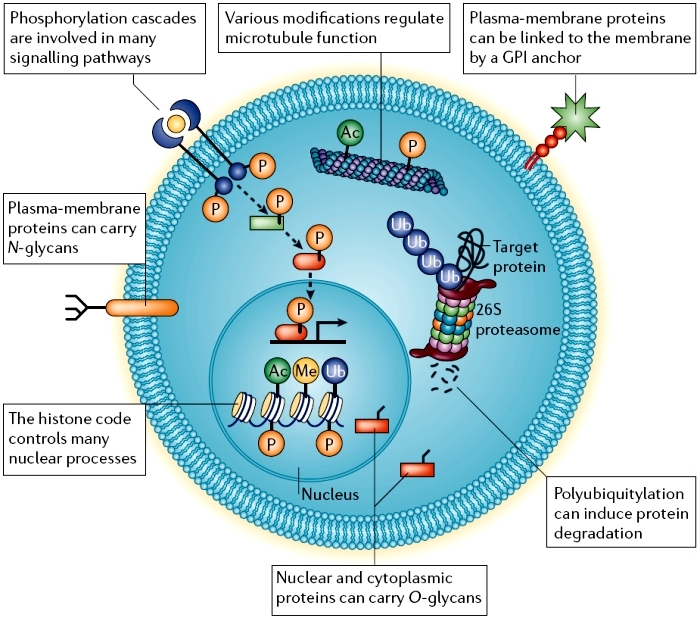Cellular post-translational modifications.
Keywords
Flag Inappropriate
Delete Content

Cellular post-translational modifications.
This schematic figure shows the location and role of a selection of some of the most important of more than 200 types of post-translational modification (PTM). PTMs are found on all types of protein, from nuclear transcription factors to metabolic enzymes, structural proteins and plasma membrane receptors. PTMs affect the physicochemical properties of proteins, which provides a mechanism for the dynamic regulation of molecular self-assembly and catalytic processes through the reversible molecular recognition of proteins, nucleic acids, metabolites, carbohydrates and phospholipids. Ac, acetyl group; GPI, glycosylphosphatidylinositol; Me, methyl group; P, phosphoryl group; Ub, ubiquitin.
This image is linked to the following Scitable pages:
Proteins are continually being synthesized, modified, and degraded, and vary among species, tissue, and even cells — how do you capture and describe this ever-changing proteome?





















Comments
CloseComments
Please Post Your Comment